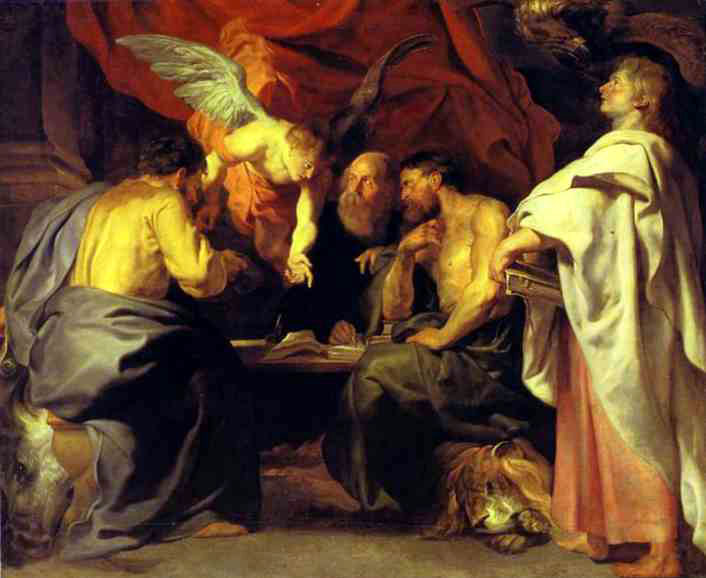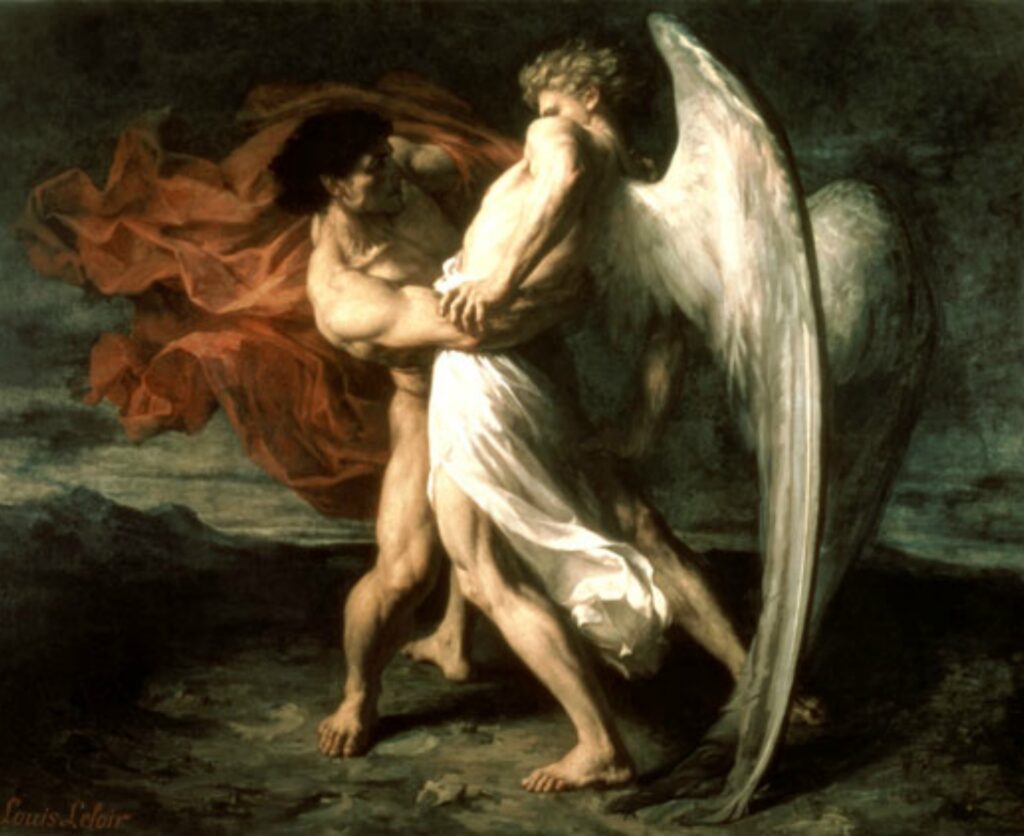* * * *

* * * *
Thursday, April 25 was the Feast Day for St. Mark, and – just to set the record straight – he wrote the first of the four Gospels. So why is he listed second, behind Matthew? It’s a story of his being “dissed” – disrespected – but eventually getting recognized for his singular contribution. That was thanks to Bible scholars who turned open-minded enough to “dig deeper.”
So you could say his is a “Cinderella story,” of success after a lowly beginning.
One reason for the early “diss” might be that his was the shortest Gospel. Another might be that his Greek was clumsy, not at all elegant. (“Short and clumsy” are hard to overcome.) And early on in Church history St. Augustine called Mark “the drudge and condenser” of Matthew. And since Mark’s written Greek was “clumsier and more awkward” than the more-polished writing of Matthew, Luke and John, his was the “least cited Gospel in the early Christian period.”
But Mark is a Cinderella story, and “this Cinderella finally got the glass slipper,” even though that had to wait until the 19th century. That’s when Bible scholars finally noticed that the other three Gospels all cited material from Mark, but “he does not do the same for them.” Their conclusion? Mark started the process and set the pattern of and for the other three Gospels. In turn, since that time Mark’s Gospel “has become the most studied and influential.”
As to Mark the author, he is generally identified as the same John Mark who “carried water to the house where the Last Supper took place” in Mark 14:13, or as the “young man who ran away naked when Jesus was arrested” in Mark 14:51. See also Acts 12:25: “Barnabas and Saul returned from Jerusalem when they had completed their service, bringing with them John, whose other name was Mark.” As to when he wrote his Gospel, the consensus is: Right after the First Jewish Revolt, which ended with Roman armies sacking Jerusalem. That explains why he wrote such a “bleak and frightening picture.” It reflected the persecution his target audience was going through. That included – but was not necessarily limited to – the Church of Alexandria, in Egypt, “one of the most important episcopal sees of Early Christianity.”
On the other hand, there’s some debate about where Mark’s Gospel really ends. In other words, is the Great Commission at the end of his Gospel authentic? (See Mark 16:14–18.)
According to some critics … Jesus never speaks with his disciples after his resurrection. They argue that the original Gospel of Mark ends at [16:8] with the women leaving the tomb.
To review, Mark 16:8 says the women – Mary Magdalene, Mary the mother of James, and Salome – “fled from the tomb, for terror and amazement had seized them; and they said nothing to anyone, for they were afraid.” That could be a bad place to end a Gospel of hope, so some scholars think a later redactor added more after Mark 16:8.
One scholar said that if the Gospel really ended at 16:8, Mark had painted a “bleak and frightening picture.” But he did so – the scholar said – because that was just what Mark’s main audience was going through at the time. In turn, ending his Gospel at 16:8 merely reflected that great persecution. In other words, Mark didn’t candy coat the trials and tribulations that all followers of Jesus can expect to go through. He didn’t pull his punches, but talked about life as it really was at the time, and a dose of reality is healthy if you’re going to get on in this world.
So what’s the Good News, the full Gospel? For one thing there’s John 6:37, where Jesus said He would never turn away anyone who came to Him. Then there’s Romans 10:9, where the Apostle Paul said, “If you declare with your mouth, ‘Jesus is Lord,’ and believe in your heart that God raised him from the dead, you will be saved.” (No ifs, ands, or buts.)
And that applies even if sometimes you do end up arguing with God…
* * * *

* * * *
The upper image is courtesy of Peter Paul Rubens: The Four Evangelists, which noted: “Rubens portrayed the four evangelists while working together on their texts. An angel helps them… Each gospel author can be identified by an attribute. The attributes were derived from the opening verses of the gospels. From left to right: Luke (bull), Matthew (man [angel]), Mark (lion), and John (eagle).”
The Book of Common Prayer reference: The “corporate-mystical” prayer is on page 339, the post-communion prayer for Holy Eucharist, Rite I.
“Feast days” are designated days on the liturgical (church) calendar “set aside to commemorate events, saints, or doctrines that are important in the life of the Church. These can range from Solemnities, which are the highest-ranking feast days like Easter and Christmas, to optional memorials that celebrate lesser-known saints.” Feast Days: Celebrating the Church’s Calendar.
Re: Mark’s inelegant Greek. Garry Wills, in his book “What Jesus Meant,” said Mark’s original Koine was a rough-hewn, “pidgin” or marketplace Greek, often clumsy and muddled so much that translators invariably “try to give more churchiness to the evangelists.” Pages xi to xii, “Note on translation:”
In koine, as in any pidgin language, niceties tend to be lost. Words are strung together, often without connectives, to get across a basic meaning… When the meaning is obscure in such a simple language, it is less often because of any sublime meaning conveyed than from mere linguistic clumsiness.
In writing this post I borrowed from past posts, including: From 2015, On St. Mark’s “Cinderella story,” from 2016. (See also Cinderella story – Idioms.) After that, More on “arguing with God” – and St. Mark as Cinderella, from back at the beginning of COVID, On St. Mark, 2020 – and today’s “plague,” and from last year, On Saints Mark, Philip and James – 2023.
The lower image, courtesy of Wikipedia, is Jacob Wrestling with the Angel, by Alexander Louis Leloir (1865). Leloir (1843-1884), was a a French painter specializing in genre and history paintings. (As to the “new creation,” in the course of wrestling, the angel – representing God – changed Jacob’s name to Israel. Genesis 32:22-31 CEV.)
* * * *

